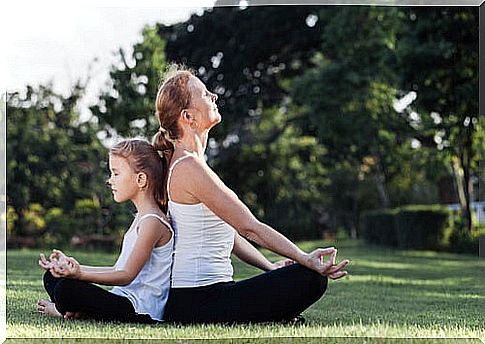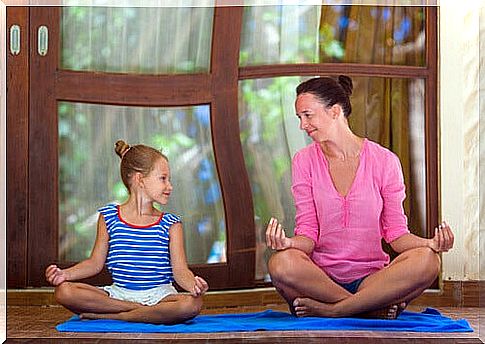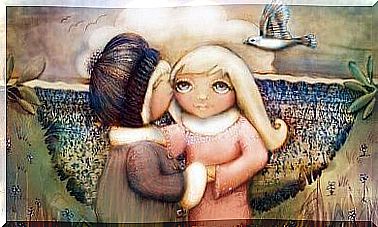How And Why To Teach Children To Meditate

Meditation and mindfulness have long been viewed as activities for adults. But this view is beginning to change. Today there is a growing interest in teaching children to meditate to help them relax, de- stress, and learn how to connect with their own inner source of calm.
But who can teach children to meditate? Teaching children to meditate and practice mindfulness is something that even the initiated can share with them. You just have to be interested, learn simple techniques, practice beforehand and, above all, understand why meditation and mindfulness practice are so interesting.
Why teach children to meditate
Haste, technology, excess stimulation and speed are some characteristics that the daily maelstrom seems to impose on us, both in adults and in children. In this sense , the reasons for teaching children to meditate are the same as why we adults should meditate: to connect with our self and absorb the energy of the earth.
The stress we undergo leads to tension and fatigue and prevents us from concentrating and focusing. We adults transmit this to children. Meditation is a tool that helps us to be more aware of ourselves, to capture positive energy and transmit it as well.

Through meditation we learn to stay grounded, to live in the present moment, and to enjoy a quiet time. This allows you to relieve tension, stay connected to your own essence, and build a sense of self-love and self-worth.
People who learn and practice meditation since childhood have tools to manage anxiety and stay focused that they will be able to use throughout their lives, which will allow them to live more fully and consciously. Meditation has an additional value for children, because it helps them improve concentration and learning.
5 strategies for teaching children to meditate
When we teach meditation to children we have to choose the appropriate techniques for the age of our little students. The following tips and strategies will help you guide this teaching.
1. Set an example
If you want to teach a child to meditate, it is necessary for him to see you do it first or, at least, to know that you are doing it. Knowing how to meditate is vital so that you know to what extent this is beneficial. With this, you will awaken curiosity in the child.
The older ones will even be able to identify the effect that meditating has had on you. Once there is a genuine and natural interest in meditation in the child, you can guide him to a better understanding and encourage his own practice.
2. Breathing is the anchor

All people who practice and teach meditation know that the breath is the beginning and the end of all types of meditation. We carry our breath with us at every moment. Therefore, the breath becomes the anchor, it helps us to focus on the present moment and place.
Children can learn it simply by observing their breathing, noticing how their chest or abdomen rises and falls with the inhale and exhale. This helps them to be in the present moment, focused on their breath and nowhere else. By doing it with him, the two of you will be anchored in that moment together, which will reinforce the bond between you.
3. Learn to adapt
Teaching meditation to children is a personal journey for them and for you. Children don’t always respond the way we adults want them to. The same thing happens with meditation. We can guide them in how to sit down, close their eyes and in all the steps they have to take, but if they don’t want to do it, there is no force.
You must find strategies to connect with their interest, offer them tools that help them calm down and relax. Many children have a hard time being still or quiet, which is not bad, but it is challenging.
4. Use your imagination

Adults spend a lot of time thinking rationally and analytically, but meditation is a time to be creative and let your imagination run wild, to create a beautiful and safe place that the little ones will love too.
In any case, you can find many books with specific meditations for children that will help you set the mood. You can use them as they are in the book and, from there, create your own or let the child also collaborate in the creation of the meditation.
5. Get ready for an extra dose of patience
The idea of teaching children to meditate may sound wonderful. But it is not easy. In fact, it can be very frustrating if you don’t approach it from a flexible and patient perspective. Let the child develop his own curiosity, feel free when you propose the meditations, and observe and “manage” the situation.
With especially restless children, it is interesting to consider meditation as a great instrument for them to become masters of their own energy and to channel it properly. Something that is easier with children lying down, instead of sitting.









